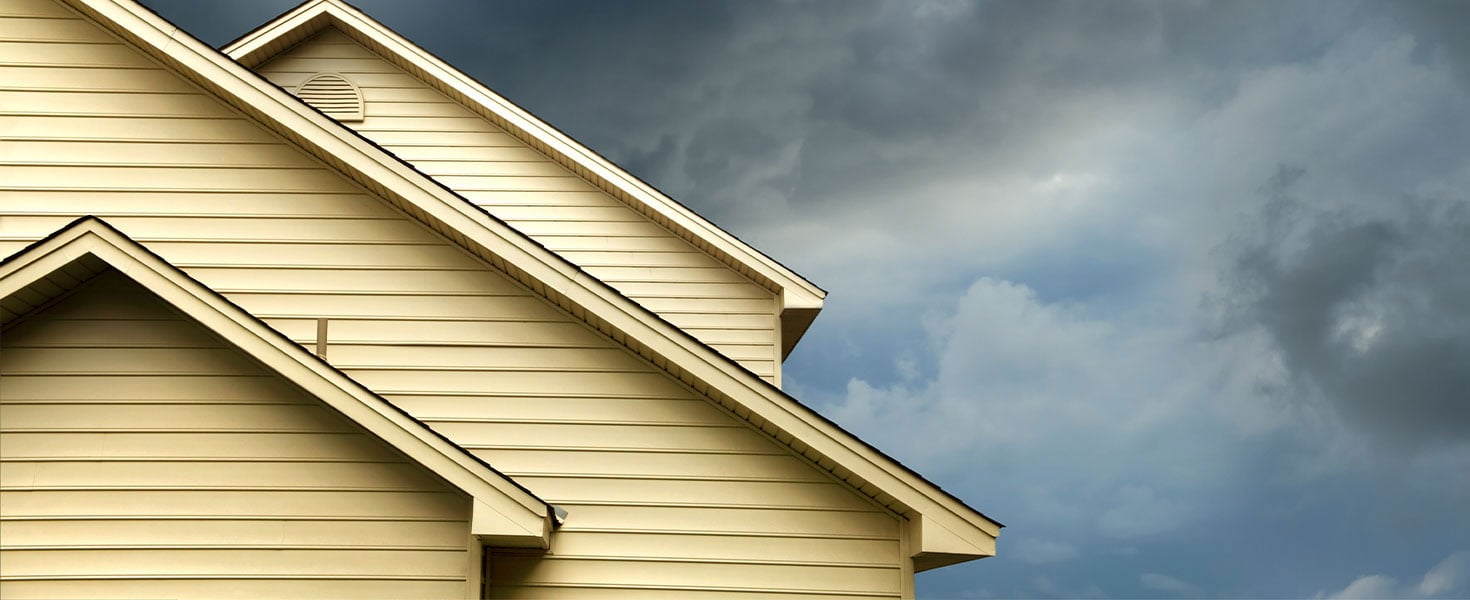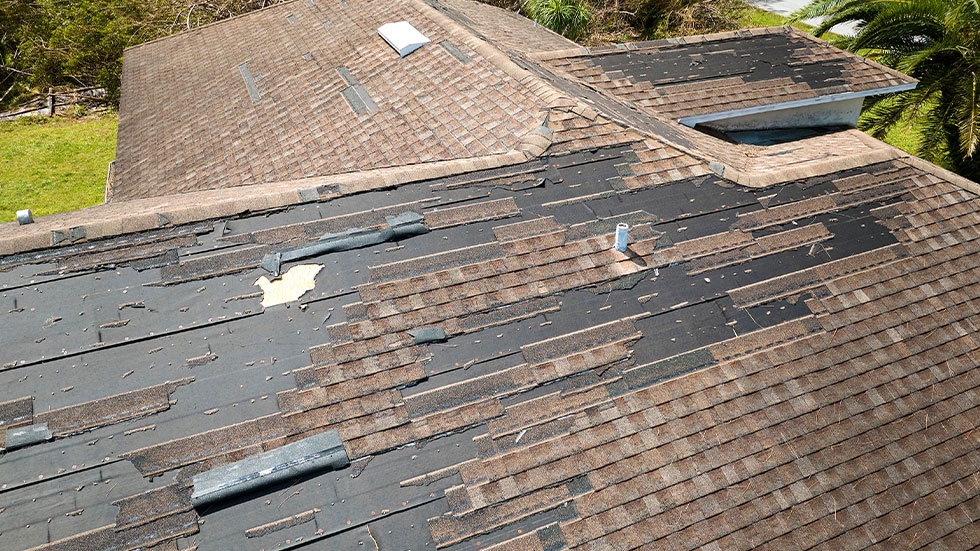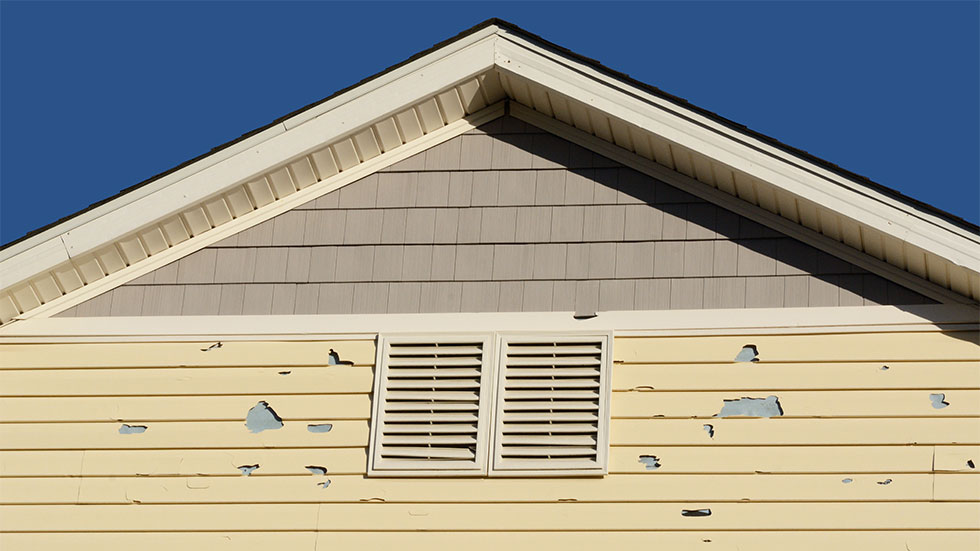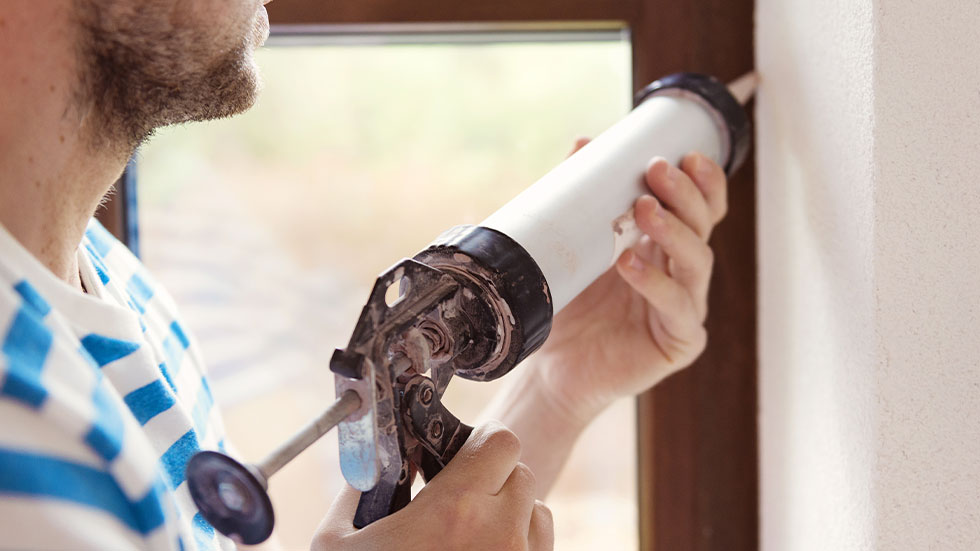Your Home & Water Damage, Wind Damage & Hail Damage
How to protect your home—and what to do if you experience storm damage


While most homes are designed to withstand the effects of bad storms, all it takes is one heavy rain, windstorm, or other weather event to cause serious damage to your property’s roof and structure.
Homes are exposed to varying degrees of damage depending on where you live, the type of storm, and the severity of exposure, as well as other factors. The most important thing is to be prepared with a solid homeowners insurance policy and to take steps to protect your home from storms and weather damage. Read on to learn more about the most common types of storm damage and tips for protecting your home.

Top 4 types of storm damage
Water damage
Water damage is common during or after a storm, and when it happens, it can affect roofs, ceilings, walls, and floors. Water damage can be caused by clogged gutters, blocked drains, cracks in the home’s foundation, or even water accumulating inside the home that made its way in through doors or cracks, and more. And unfortunately, sometimes water damage isn’t visible until a significant amount of damage has been done. Mold, rot, mildew, electrical damage, weakened structures, and more are all risks of water in the home.
Even if you don’t notice any damage at first, a small amount of water can lead to major problems, so it’s best to call in the experts after a major storm.

Wind damage
Wind damage happens when strong gusts of wind blow at high velocity. While tornados and hurricanes are the two most common types of winds that cause damage, strong thunderstorms can also have impact. Strong winds can:
- Rip off roof shingles, leaving it exposed and at risk of taking in water.
- Carry debris that can damage your roof, home, or other items on your property (like windows or your vehicle).
- Blow down or away unsecured fence.
- Knock down trees that can cause damage to your home, power lines, or other items.
After a storm, walk around your property and make note of fallen trees, loose or missing shingles, and damaged soffit or fascia, which should be addressed immediately to avoid water leaks and further damage.

Hail damage
Hail can happen year-round, so it can be difficult to predict. While impact on a roof and home can vary depending on the materials and technique used to build the home, hail can cause:
- Cracked and dented shingles.
- Damaged roof vents.
- Dented exterior pipes.
- Broken windows.
- Dents or cracked windows in a vehicle.
- Dents and cracks in siding.
If you experience a hailstorm, walk around your home and look for damage to gutters, downspouts, siding, and the roof and get repairs scheduled as soon as possible.
Impact damage
Impact damage can be small, or it can be catastrophic. Typically, this type of damage happens from fallen trees and debris getting blown by strong winds against structures and other properties. Objects can fall or get blown into houses, vehicles, and equipment, resulting in major losses.
When it’s safe, assess impact damage (from a safe distance). Make note and take photos of any damage caused by trees or debris.

How to protect your home from storm damage
Before any weather-related event, some things you can do to protect your home include:
- Repair any peeling shingles.
- Reinforce your fence.
- Make sure all doors and windows are sealed properly.
- Repair any cracks in your home’s foundation.
- Install proper drainage in your yard to prevent standing water.
- Clean out your gutters.
- Keep buildings away from tall trees and trim trees around your house.
- Remove any weak trees that wouldn’t be able to withstand strong winds.
Additionally, if you’re having any work on your home done, make sure to hire professional contractors who use robust and reliable materials for any repairs or construction.
If you have a strong storm, tornado, hurricane, or other weather event that can cause damage to your home, and if it’s safe to do so, you should:
- Secure outdoor equipment and items that can get blown in wind.
- Bring in outdoor furniture.
- Park your car in a secure garage, or at least away from trees.
- Stay away from windows or doors.
- Remove fragile items from the walls (should strong winds cause the home to shake).
Finally, make sure your homeowners insurance policy covers anything your home may face. Talk to your insurance agent to learn about your coverage and whether you need any additional coverage for certain events. If your home does incur damage from a storm, notify your insurance provider and file a claim right away.
